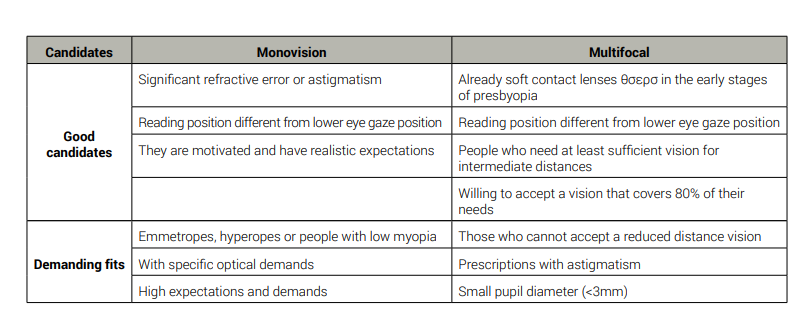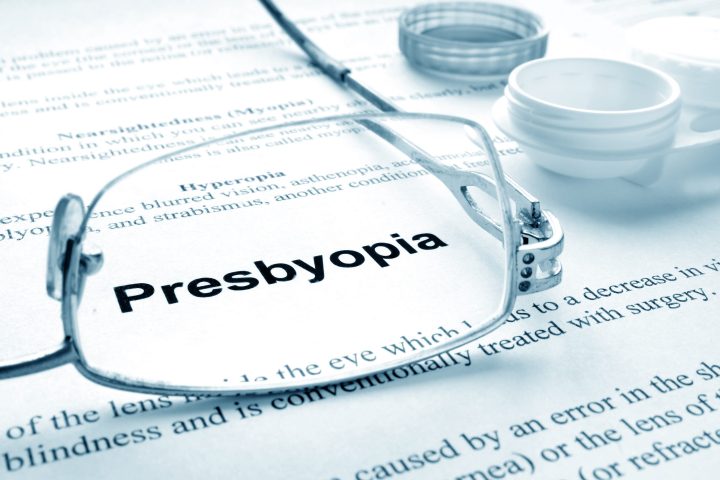Nowadays, presbyopia can be defined as the condition that occurs when the normal ability of the eye to focus at different distances due to age begins to decrease despite optimal refractive correction for distance, with vision for near distances being characterized as inadequate. In fact, it is estimated that in 2000, presbyopia had a prevalence of 1.4 billion (23% of the world’s population), with this figure rising to 1.8 billion in 2015. A peak in the prevalence of presbyopia is estimated to be observed by 2030, with the number reaching 2.1 billion individuals (Figure 1) [17,26,37].
The most prevalent ways of managing presbyopia with contact lenses (contact lenses) involve the use of monofocal contact lenses for distance vision while wearing near vision glasses, monovision, modified monovision and multifocal contact lenses. One of the most important reasons that users stopped using multifocal contact lenses was related to poor visual performance, dryness and intolerance (poor visual performance, intense lens sensation, optical disturbances, etc.). In fact, regarding the issue of discomfort, a survey recorded that 50% of people reported intolerance, while similar rates were recorded in studies in the USA and the UK with rates of 39% and 31% respectively [37].
Modified monovision combines the positive aspects of both techniques (multifocal – monovision). Specifically, modified monovision combines multifocality in one eye and single or multifocal vision in the other eye. As a technique it seems to have more positive results than monovision and multifocal contact lenses.
Monovision as a technique has been used for several years, in particular since the late 1950s, the first to describe this method was Westsmith [37]. The design and material of contact lenses for the monovision technique is no different from contact lenses for correcting refractive errors for long distance, making monovision an easy, quick and economical technique for managing presbyopia with contact lenses. In monovision one eye is corrected for distance (dominant) and the other is corrected for near, in this technique even small degrees of astigmatism (especially in the dominant eye and even more critically when the astigmatism is between ~70° – 120°) must be corrected for the best visual outcome at distant and near distances.

Advantages of monovision
• Easy adjustment
• Low cost
• Efficient vision at any distance
• None of the optical performance disadvantages of multifocals are observed
• Not affected by pupil size
• Easier to understand by users
• We can more effectively correct astigmatism with simpler design
Disadvantages of monovision
The main disadvantages – concerns observed relate to reduced stereoscopic vision, reduced depth perception, reduced contrast sensitivity, limitation in the addition that can be administered, difficulty in driving especially at night and difficulty in accurately calculating distances. In multifocal contact lenses, the zones of distance and near vision fall within the cortical area at the same time. This method involves a trade-off between depth of field and image quality, with the outcome of multifocal contact lenses depending on a number of factors such as, pupil size, patient, age, contact lens design, etc.
The relationship between pupil size and multifocal contact lens design significantly determines the relative proportions of near and distance vision available to the wearer. The pupil aperture diameter as well as aberrations appear to be two of the main factors affecting image quality. Pupil size is significantly affected by age and refractive error.
Finally, in order to achieve the best optical result, time and patience must be devoted to discussing needs and expectations, the correct refraction, the choice of frame and of course lifelong learning in order to be well trained for better and more comprehensive service provision. It is important to remember that although there are guidelines, each optical system reacts differently so the approach must be individualized. •

Αndronikos Chrysanthopoulos, BSc, Msc. Οptician - Optometrist





